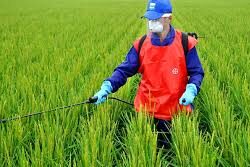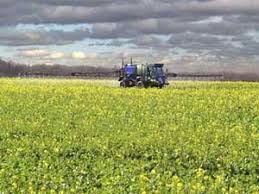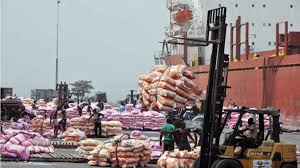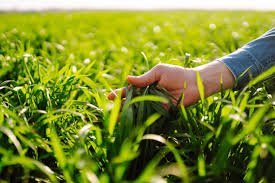In the previous article, the advantages of unrestricted international trade were discussed. However, despite these benefits, all countries use various means to protect their economies. This article explores why countries, including those in agriculture, protect their economies through trade restrictions.
Justifications for Protecting Economies
Both economic and non-economic reasons exist for protecting an economy from the impacts of free trade. Generally, trade is controlled because governments prioritize national interests over international considerations. While the global community may lose when trade is restricted, specific countries or sectors, such as agriculture, may gain.
Read Also: The Techniques Used for Enhancing Farm Yield
Economic Justification for Protection

1. To Improve the Terms of Trade: A country could impose heavy taxes on agricultural imports to discourage consumption of foreign goods. If the demand for these goods is elastic, the imposition of a tax will lead to a reduction in demand, consequently improving the balance of trade. For agricultural sectors, this could mean better conditions for local producers.
2. To Protect Infant Industries in Agriculture: Protecting emerging agricultural industries from excessive competition is crucial, especially from large-scale international producers. A guaranteed domestic market helps these industries overcome initial challenges.
Over time, the industry becomes strong enough to compete globally. However, the downside is that protected industries may resist losing protection, leading to inefficiencies and the production of inferior goods. For example, local agricultural processing industries may struggle with quality even after years of protection.
3. To Help an Industry Overcome Economic Shocks: Changes in demand for goods produced by a domestic industry can harm its viability. When such industries are protected, they are given more time to adjust.
For instance, in the 1980s, the demand for locally produced agricultural products like shoes in Nigeria declined. Without protection, these industries might have collapsed, but protection allowed them time to recover and adapt.
4. To Prevent Dumping of Agricultural Products: Dumping occurs when goods are sold abroad at prices lower than those in the domestic market. This can happen when producers receive export subsidies, when monopolies can discriminate against markets, or when producers take advantage of economies of scale. Protection can prevent dumping by ensuring that imported goods do not undercut local agricultural prices.
5. To Stimulate Domestic Employment: During periods of global economic downturns, national governments often restrict imports to ensure that domestic income is spent on locally produced goods. For the agricultural sector, this can mean increased demand for locally grown crops and products, thus creating more employment opportunities in rural areas.
6. To Regulate the Consumption of Harmful Agricultural Goods: Governments often restrict the importation of goods that could harm the health of their citizens. For example, many governments place heavy tariffs on tobacco, alcohol, and processed foods. This policy aims to reduce the consumption of harmful products and encourage the growth of healthier, locally-produced agricultural goods.
Non-Economic Arguments for Protecting Economies

1. To Encourage the Production of Goods of Strategic Importance: Certain goods, such as defense weapons and staple food products, are strategically important and must be produced locally. Relying on other countries for these goods poses security risks.
For example, the Nigerian Air Force’s decision to assemble Air Beetle Aircraft for training purposes highlights the importance of local production in critical sectors. Similarly, a country should aim for self-sufficiency in staple foods to avoid dependence on imports, which could be used as leverage during times of conflict.
2. To Foster Closer Political Ties: Trade policies can be used to strengthen political relationships. For example, in 1932, the United Kingdom imposed tariffs on many imports to offer preferential rates to Commonwealth countries.
Similarly, ECOWAS countries could impose tariffs on goods from outside the sub-region to promote intra-regional trade and solidify political ties within West Africa.
3. To Prosecute Political Objectives: Trade is sometimes used as a foreign policy tool. For instance, the United States withheld wheat exports to the USSR after the Soviet occupation of Afghanistan. Additionally, economic sanctions imposed on South Africa played a significant role in dismantling apartheid by isolating the country economically.
4. To Promote Social Policies: Agricultural subsidies are not only intended to support the strategic production of food but also to redistribute income and support the rural poor, who are often engaged in agriculture. These policies help address social disparities by ensuring that rural communities, which form the backbone of agricultural production, receive the necessary support.
Read Also: 16 Medicinal Health Benefits Of Pomaderris kumeraho (Kumerahou)
Methods of Controlling International Trade

Different countries adopt various measures to regulate the flow of free trade. The most common methods are discussed below:
1. Customs Duties: This is a form of tax imposed on imported goods when they arrive at a port or approved station. Customs duties may be used to raise revenue and are easy to collect. Since they are usually levied on goods, they do not distort trade deals.
For example, under Nigeria’s Structural Adjustment Programme (SAP), customs duties were adjusted periodically to discourage the consumption of foreign-made goods.
2. Subsidies: Governments sometimes offer subsidies to producers of export goods to lower production costs, making the country’s exports more competitive in the global market. This can lead to an increase in exports, thereby improving the country’s balance of trade.
3. Quotas: Quotas limit the quantity of imports allowed into a country over a specified period. Import licenses are often used to regulate the amount of goods to be imported. The main issues with quotas are that they may lead to artificially high prices due to limited supply, benefiting importers instead of consumers.
Quotas can also encourage corruption, as seen in Nigeria before 1986, when import licenses were often sold at exorbitant prices, making imported goods more expensive for consumers.
4. Exchange Control: This method involves regulating the foreign exchange available for importing goods. All foreign currency earnings must be handed over to the government or its agent (e.g., the Central Bank of Nigeria), which alone can authorize withdrawals for paying for imports, foreign travel, and capital movements.
While effective in controlling the availability of foreign exchange, exchange control can encourage illegal currency trade, as it creates a scarcity of foreign currency within the country.
5. Physical Control: This involves imposing a ban or embargo on the importation of specific goods. For example, in 1986, Nigeria imposed a ban on the importation of food grains such as wheat, rice, and maize. This forced the country to increase local production of these staples to meet demand.
Do you have any questions, suggestions, or contributions? If so, please feel free to use the comment box below to share your thoughts. We also encourage you to kindly share this information with others who might benefit from it. Since we can’t reach everyone at once, we truly appreciate your help in spreading the word. Thank you so much for your support and for sharing!
Read Also: Best Organic Fertilizer for Vegetables

